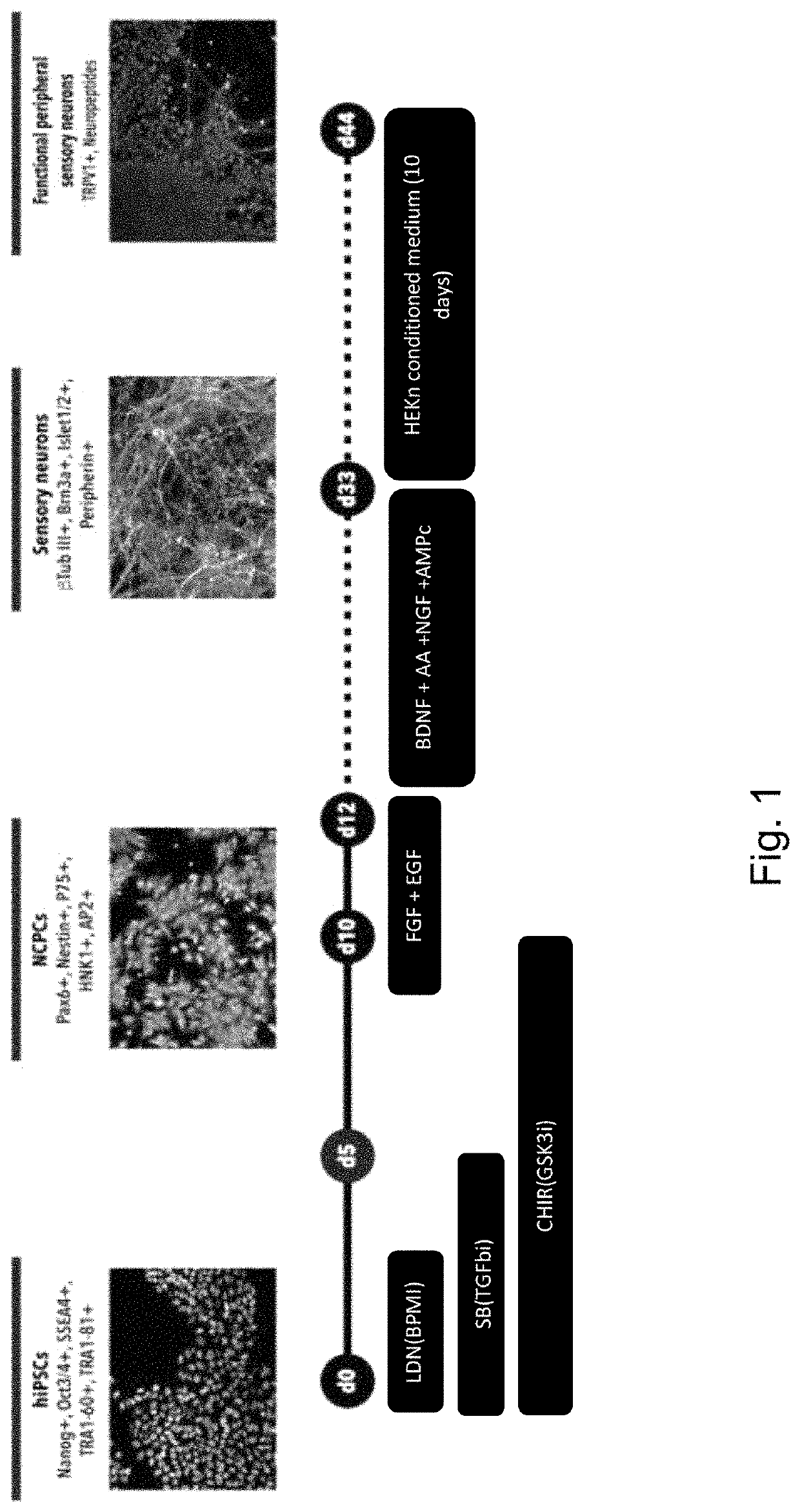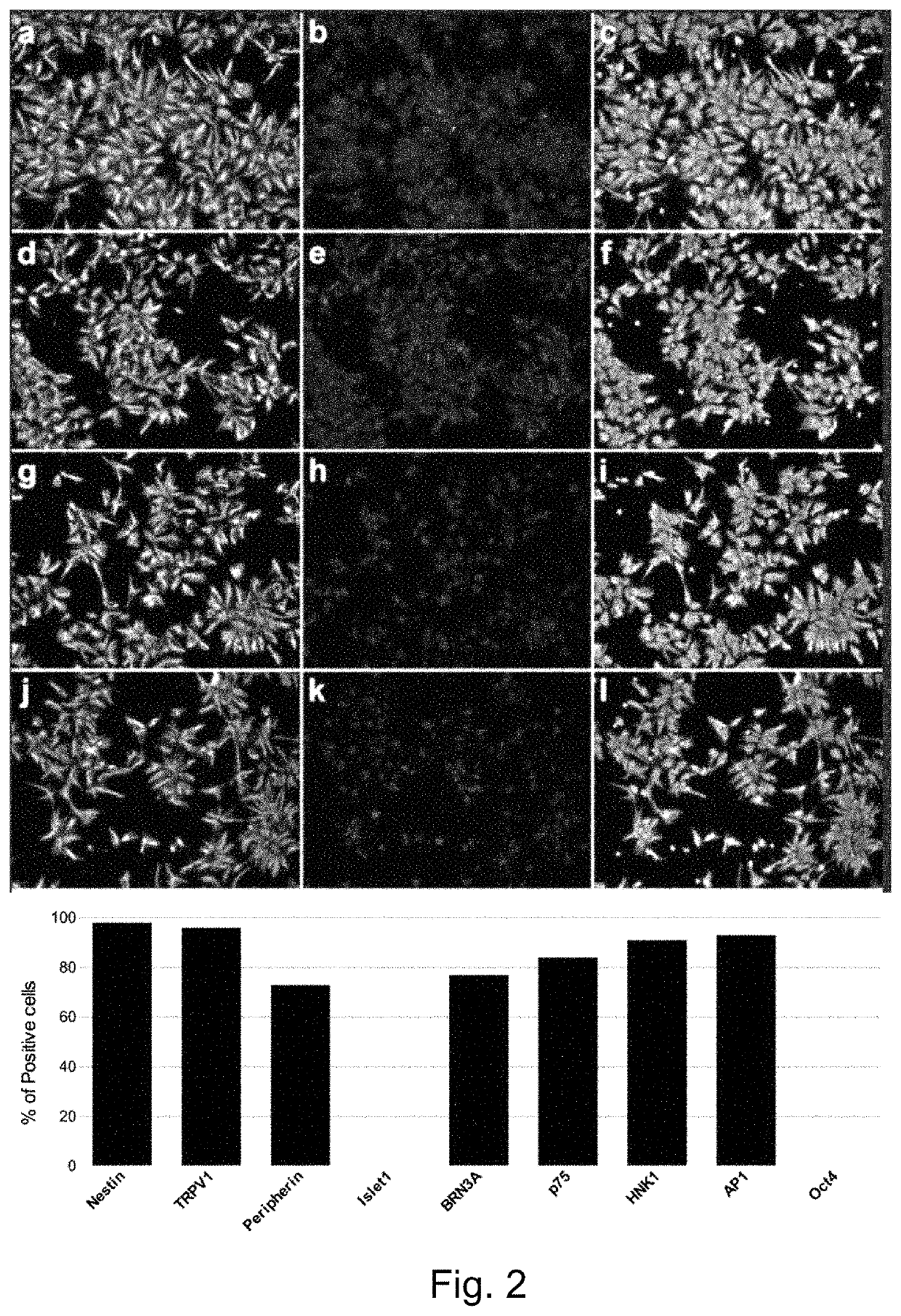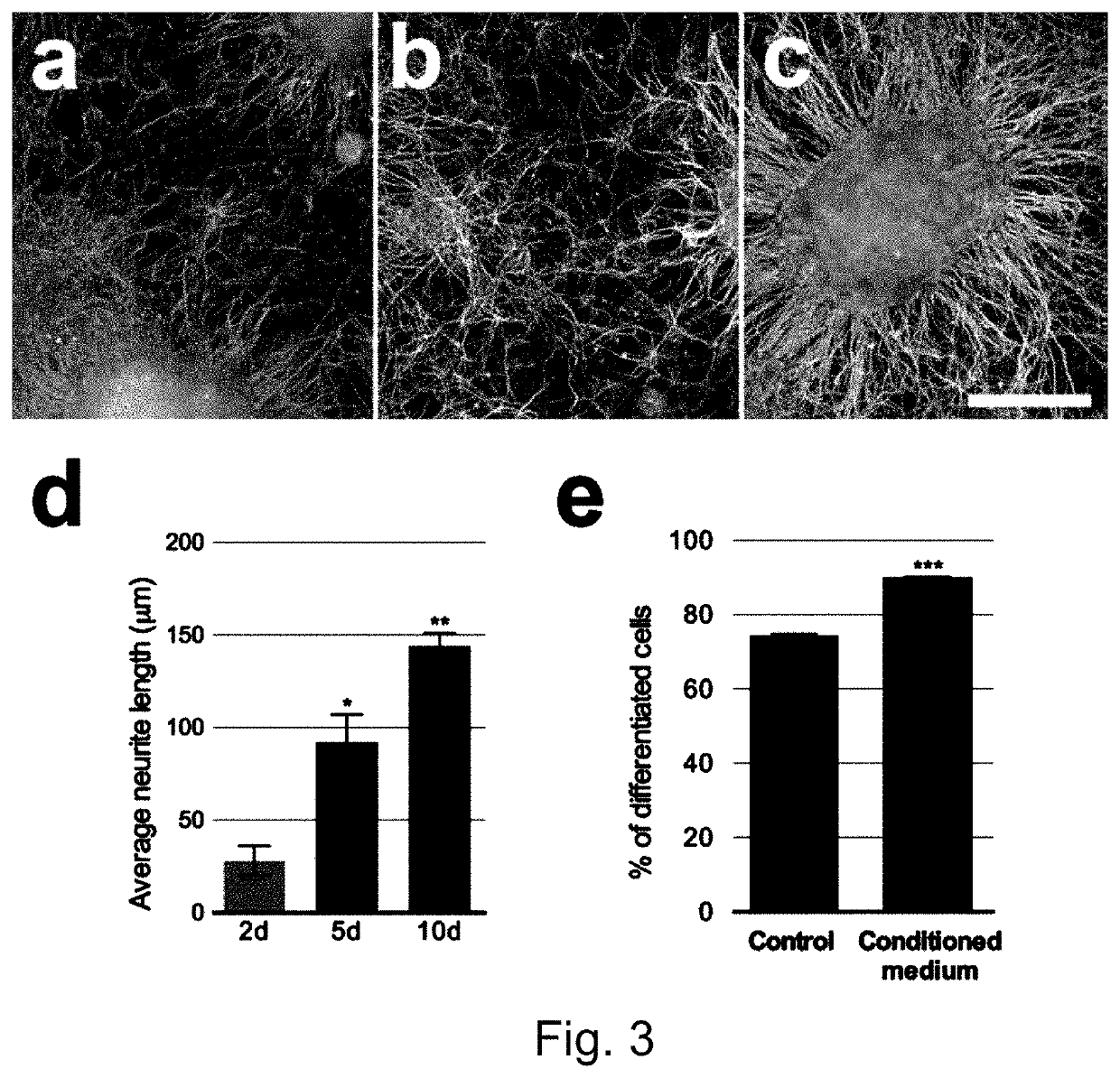Method of human periferic sensory neurons differenciation from human stem cells and uses thereof
a periferic sensory and human stem cell technology, applied in the field of stem cell biology, can solve the problems of in vitro derivation of neurons, limited conventional methods currently available for such investigation, and the difficult investigation of stem cell microenvironmental factors on differentiation, etc., to achieve less labor, less prone to errors, and high differentiation yield
- Summary
- Abstract
- Description
- Claims
- Application Information
AI Technical Summary
Benefits of technology
Problems solved by technology
Method used
Image
Examples
examples
[0111]Differentiation of Human Induced Pluripotent Stem Cells (hiPSCs) to NCPCs
[0112]Human induced pluripotent stem cells (hiPSC) were cultured in mTeSR™1 medium (STEMCELL Technologies, Canada) on Matrigel (BD Biosciences)-coated dishes in standard culture conditions (37° C., 5% CO2). The colonies were split using 0.5 mM EDTA (Thermo Fisher Scientific, USA) every 4-5 days. Human iPS cell cultures at 40-70% confluence were used for NCPC induction. hiPSCs were exposed for 10 days (see the FIG. 1) to chemically defined 3N induction medium (DMEM+Neurobasal medium 50:50 v / v, 1% Glutamax, 0.5% N2, 1% B27, 0.5% NEAA, 55 mM β-mercaptoethanol and 1% Penicillin / Streptomycin, all from Thermo Fisher Scientific, USA) freshly supplemented with three small-molecule compounds. The addition of these compounds was as following: day 1:500 nM LDN (Stemgen, USA)+10 μM SB (Sigma Aldrich, USA); day 2: 500 nM LDN+10 μM SB+3 μM CHIR (Tocris Bioscience, USA); day 3: 10 μM SB+3 μM CHIR. At days 4, 6 and 8, th...
PUM
| Property | Measurement | Unit |
|---|---|---|
| temperature | aaaaa | aaaaa |
| temperature | aaaaa | aaaaa |
| concentration | aaaaa | aaaaa |
Abstract
Description
Claims
Application Information
 Login to View More
Login to View More - R&D
- Intellectual Property
- Life Sciences
- Materials
- Tech Scout
- Unparalleled Data Quality
- Higher Quality Content
- 60% Fewer Hallucinations
Browse by: Latest US Patents, China's latest patents, Technical Efficacy Thesaurus, Application Domain, Technology Topic, Popular Technical Reports.
© 2025 PatSnap. All rights reserved.Legal|Privacy policy|Modern Slavery Act Transparency Statement|Sitemap|About US| Contact US: help@patsnap.com



